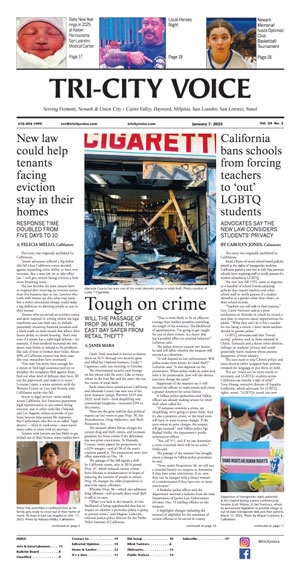[et_pb_section bb_built=”1″ _builder_version=”3.22″][et_pb_row _builder_version=”3.25″ background_size=”initial” background_position=”top_left” background_repeat=”repeat”][et_pb_column type=”4_4″ _builder_version=”3.0.47″ custom_padding=”|||” custom_padding__hover=”|||”][et_pb_image src=”http://tricityvoice.com/wp-content/uploads/2011/10/TCV-Search.png” align=”center” force_fullwidth=”on” align_tablet=”center” align_last_edited=”on|desktop” _builder_version=”4.5.3″ animation_style=”fade” box_shadow_style=”preset3″ vertical_offset_tablet=”0″ horizontal_offset_tablet=”0″ z_index_tablet=”0″]
[/et_pb_image][et_pb_divider divider_weight=”4″ _builder_version=”3.14″ height=”0px”]
[/et_pb_divider][et_pb_text _builder_version=”4.7.7″ z_index_tablet=”500″ hover_enabled=”0″ text_text_shadow_horizontal_length_tablet=”0px” text_text_shadow_vertical_length_tablet=”0px” text_text_shadow_blur_strength_tablet=”1px” link_text_shadow_horizontal_length_tablet=”0px” link_text_shadow_vertical_length_tablet=”0px” link_text_shadow_blur_strength_tablet=”1px” ul_text_shadow_horizontal_length_tablet=”0px” ul_text_shadow_vertical_length_tablet=”0px” ul_text_shadow_blur_strength_tablet=”1px” ol_text_shadow_horizontal_length_tablet=”0px” ol_text_shadow_vertical_length_tablet=”0px” ol_text_shadow_blur_strength_tablet=”1px” quote_text_shadow_horizontal_length_tablet=”0px” quote_text_shadow_vertical_length_tablet=”0px” quote_text_shadow_blur_strength_tablet=”1px” header_text_shadow_horizontal_length_tablet=”0px” header_text_shadow_vertical_length_tablet=”0px” header_text_shadow_blur_strength_tablet=”1px” header_2_text_shadow_horizontal_length_tablet=”0px” header_2_text_shadow_vertical_length_tablet=”0px” header_2_text_shadow_blur_strength_tablet=”1px” header_3_text_shadow_horizontal_length_tablet=”0px” header_3_text_shadow_vertical_length_tablet=”0px” header_3_text_shadow_blur_strength_tablet=”1px” header_4_text_shadow_horizontal_length_tablet=”0px” header_4_text_shadow_vertical_length_tablet=”0px” header_4_text_shadow_blur_strength_tablet=”1px” header_5_text_shadow_horizontal_length_tablet=”0px” header_5_text_shadow_vertical_length_tablet=”0px” header_5_text_shadow_blur_strength_tablet=”1px” header_6_text_shadow_horizontal_length_tablet=”0px” header_6_text_shadow_vertical_length_tablet=”0px” header_6_text_shadow_blur_strength_tablet=”1px” box_shadow_horizontal_tablet=”0px” box_shadow_vertical_tablet=”0px” box_shadow_blur_tablet=”40px” box_shadow_spread_tablet=”0px” text_text_shadow_horizontal_length=”text_text_shadow_style,%91object Object%93″ text_text_shadow_vertical_length=”text_text_shadow_style,%91object Object%93″ text_text_shadow_blur_strength=”text_text_shadow_style,%91object Object%93″ link_text_shadow_horizontal_length=”link_text_shadow_style,%91object Object%93″ link_text_shadow_vertical_length=”link_text_shadow_style,%91object Object%93″ link_text_shadow_blur_strength=”link_text_shadow_style,%91object Object%93″ ul_text_shadow_horizontal_length=”ul_text_shadow_style,%91object Object%93″ ul_text_shadow_vertical_length=”ul_text_shadow_style,%91object Object%93″ ul_text_shadow_blur_strength=”ul_text_shadow_style,%91object Object%93″ ol_text_shadow_horizontal_length=”ol_text_shadow_style,%91object Object%93″ ol_text_shadow_vertical_length=”ol_text_shadow_style,%91object Object%93″ ol_text_shadow_blur_strength=”ol_text_shadow_style,%91object Object%93″ quote_text_shadow_horizontal_length=”quote_text_shadow_style,%91object Object%93″ quote_text_shadow_vertical_length=”quote_text_shadow_style,%91object Object%93″ quote_text_shadow_blur_strength=”quote_text_shadow_style,%91object Object%93″ header_text_shadow_horizontal_length=”header_text_shadow_style,%91object Object%93″ header_text_shadow_vertical_length=”header_text_shadow_style,%91object Object%93″ header_text_shadow_blur_strength=”header_text_shadow_style,%91object Object%93″ header_2_text_shadow_horizontal_length=”header_2_text_shadow_style,%91object Object%93″ header_2_text_shadow_vertical_length=”header_2_text_shadow_style,%91object Object%93″ header_2_text_shadow_blur_strength=”header_2_text_shadow_style,%91object Object%93″ header_3_text_shadow_horizontal_length=”header_3_text_shadow_style,%91object Object%93″ header_3_text_shadow_vertical_length=”header_3_text_shadow_style,%91object Object%93″ header_3_text_shadow_blur_strength=”header_3_text_shadow_style,%91object Object%93″ header_4_text_shadow_horizontal_length=”header_4_text_shadow_style,%91object Object%93″ header_4_text_shadow_vertical_length=”header_4_text_shadow_style,%91object Object%93″ header_4_text_shadow_blur_strength=”header_4_text_shadow_style,%91object Object%93″ header_5_text_shadow_horizontal_length=”header_5_text_shadow_style,%91object Object%93″ header_5_text_shadow_vertical_length=”header_5_text_shadow_style,%91object Object%93″ header_5_text_shadow_blur_strength=”header_5_text_shadow_style,%91object Object%93″ header_6_text_shadow_horizontal_length=”header_6_text_shadow_style,%91object Object%93″ header_6_text_shadow_vertical_length=”header_6_text_shadow_style,%91object Object%93″ header_6_text_shadow_blur_strength=”header_6_text_shadow_style,%91object Object%93″ vertical_offset_tablet=”0″ horizontal_offset_tablet=”0″]
The Back to the Future franchise made popular from the first 1985 film featuring a young man’s journey with a brilliant, but eccentric inventor who converts a DeLorean automobile into a time machine, describes the advantages and pitfalls of traveling back and forth through time. Throughout the initial film and its two sequels, characters Marty McFly and Doc Emmett L. Brown face some of the same challenges although in different temporal contexts. In all instances, changing scenery and alteration of primary protagonists and villains doesn’t change a story line that revolves around key incidents and their consequences, calling for courage in the face of bullying and intimidation.
In our daily lives, it is easier to ignore or deflect rather than confront significant community concerns. After all, it may appear there is little the average resident can do to alter the direction of events when those in power decide on a course of action. However, it is possible to pay attention to events and decisions that lead to an ultimate result and thereby alter results. Most choices that appear at council meetings do not just suddenly appear on an agenda. Typically, they travel a path, often visible to the public, through boards or commissions tasked with sifting through details of a proposal before it is presented to ultimate decision makers. Criticism and suggestions can have a much greater impact in the formative stages of proposals rather than following extensive time and effort fashioning a finished product. Resistance to change is magnified as the process proceeds.
Just as Marty McFly traveled through time to understand why and how his present and future situation was altered by past actions, so too can we, the public, review past challenges that remain, though in a different context, today. The clamor about growth, housing, traffic, environment, wage disparity and quality of life have been muted by the prevalence of concern about the devastating impact of COVID-19. But as a plethora of vaccines become widely available, hopefully 2021 will see this threat recede. However, the same pre-COVID problems remain and need to be addressed, although probably in a different context.
How will the advent of significant telehealth, telecommute and economic measures emerge from the devastating impacts of a pandemic? Will needs and direction modify in response to changes of population pressures in the Bay Area? Some major industries have opted for growth in different geographical locations while others may adapt to more home-based employment. Will choking traffic patterns continue to escalate or abate in response to these changes? Will new development such as the proposed Costco at NewPark Mall exacerbate existing traffic bottlenecks or enhance the viability of nearby housing? What will be the effect on regional mass transportation networks? If population pressure decreases, what happens to inequality of housing opportunities?
These are just a few of the challenges and opportunities facing new and returning administrations. It is imperative that our elected leaders and their professional staffs carefully examine and try to anticipate how these changes will affect the future of our Bay Area communities. As the clock struck midnight on December 31, 2020, a collective sigh of relief was palpable. In response to a feeling of hope for the new year, it is now time for all of us to renew commitments to collective vigilance that will guide, aid and support all aspects of families, friends and neighbors.
As Doc Brown says in a parting message to Marty and (wife) Lorraine, “Your future is whatever you make it, so make it a good one.”
[/et_pb_text][/et_pb_column][/et_pb_row][/et_pb_section]



